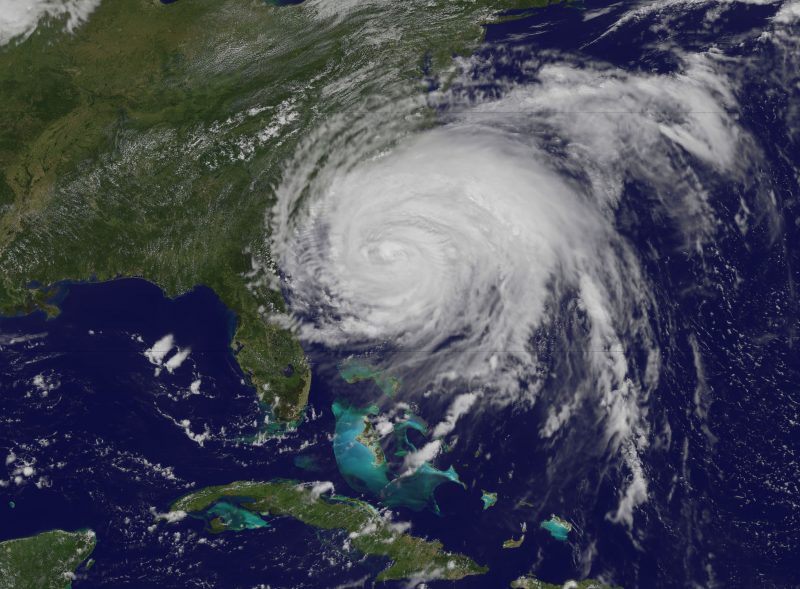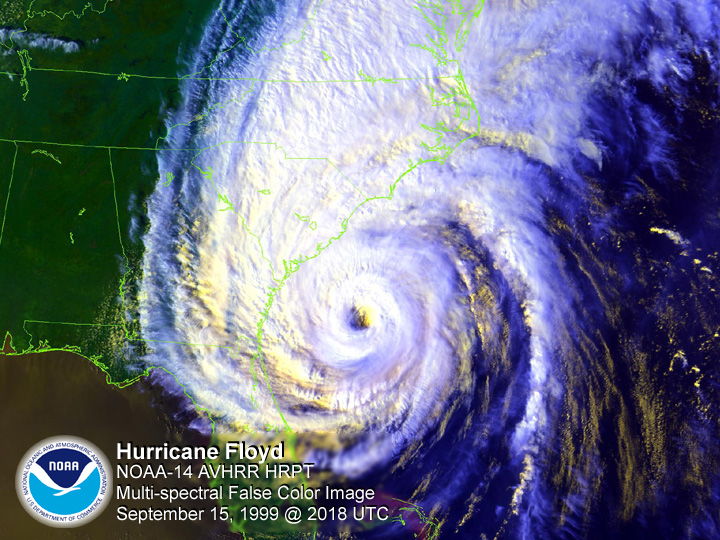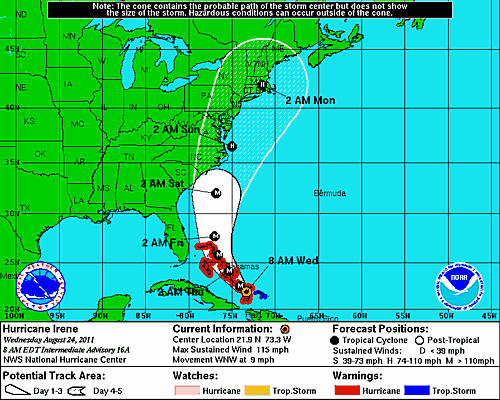
The 2012 Atlantic hurricane season will provide a valuable research opportunity for the Coastal and Inland-Flooding Observation and Warning Project (CI-FLOW). The goal during the 2012 hurricane season is to produce realistic simulations of total water level in real time for coastal storms. National Weather Service forecasters will have access to CI-FLOW during these events to help them evaluate the system for application in the flood and flash-flood warning process.
CI-FLOW is a demonstration project that captures the complex interaction between rainfall, river flows, waves, tides and storm surge, and how these factors affect water levels in the Tar-Pamlico and Neuse rivers and the Pamlico Sound in North Carolina.
CI-FLOW was tested in August 2011 as Hurricane Irene made landfall near Morehead City, NC. CI-FLOW total water-level simulations were compared with water levels observed during the storm. Researchers found a high level of agreement in both the timing and water-level heights for the Tar-Pamlico and Neuse coastal watershed.
The CI-FLOW project is motivated by NOAA’s critical forecast need for detailed water-level predictions in coastal areas and has a vision to transition CI-FLOW research findings and technologies to other U.S. coastal watersheds.
This real-time demonstration will offer valuable insight on the accuracy and utility of total water level predictions for communities in the coastal plain of the Tar-Pamlico and Neuse rivers and the Pamlico Sound. Real-time simulations of coastal water levels for the 2012 Atlantic hurricane season are available on the CI-FLOW website (http://www.nssl.noaa.gov/projects/ciflow/). The site also includes an introductory video that highlights the flooding from Hurricane Floyd in 1999 and the response from Sea Grant and NOAA partners. (http://www.nssl.noaa.gov/ciflow/)
The NOAA National Severe Storms Laboratory with support from the NOAA National Sea Grant College Program leads the unique interdisciplinary team including the North Carolina, South Carolina, and Texas Sea Grant Programs; University of Oklahoma; Renaissance Computing Institute (RENCI), University of North Carolina at Chapel Hill; Seahorse Consulting; NWS Forecast Offices in Raleigh, and Newport/Morehead City; NWS Southeast River Forecast Center; NOAA’s Coastal Services Center; NOAA in the Carolinas; NOAA Southeast and Caribbean Regional Team (SECART); NOAA-Integrated Ocean Observing System; Department of Homeland Security, Center of Excellence-Natural Disasters, Coastal Infrastructure and Emergency Management; Centers for Ocean Sciences Education Excellence SouthEast; Coast Survey Development Laboratory; and NWS Office of Hydrologic Development.



